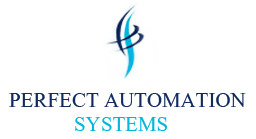PLC
PLC

PLC (Programmable Logic Controller) is an electronic device, previously called “sequence controller”. In 1978, NEMA (National Electrical Manufacture Association) in the United States officially named it as “programmable logic controller”. PLC reads the status of the external input devices, e.g. keypad, sensor, switch and pulses, and execute by the microprocessor logic, sequential, timing, counting and arithmetic operations according the status of the input signals as well as the pre-written program stored in the PLC.
The generated output signals are sent to output devices as the switch of a relay, electromagnetic valve, motor drive, control of a machine or operation of a procedure for the purpose of machine automation or processing procedure. The peripheral devices (e.g. personal computer/handheld programming panel) can easily edit or modify the program and monitor the device and conduct on-site program maintenance and adjustment.
The widely used language in designing a PLC program is the ladder diagram. With the development of the electronic technology and wider applications of PLC in the industry, for example in position control and the network function of PLC, the input/output signals of PLC include DI (digital input), AI (analog input), PI (pulse input), NI (numeric input), DO (digital output), AO (analog output), and PO (pulse output). Therefore, PLC will still stand important in the industrial automation field in the future.
Applications :
- Sticker Lablling Machine
- Hot Glue Lablling Machine
- Pharma Machinery
- Fbd
- Rmg
- Auto Coater
- Auto Cleve
- Tablet Making Machine
- Capsule Making Machine
- Filling
- Orienting
- Monoblock
- Water Bottlr Filling Machine
- Water Bottle Sliv Applicator
- Water Bottle Packaging
